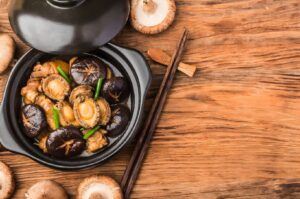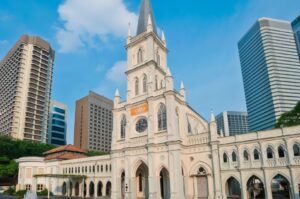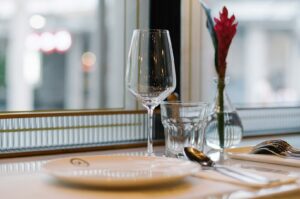Who Are the Peranakans?
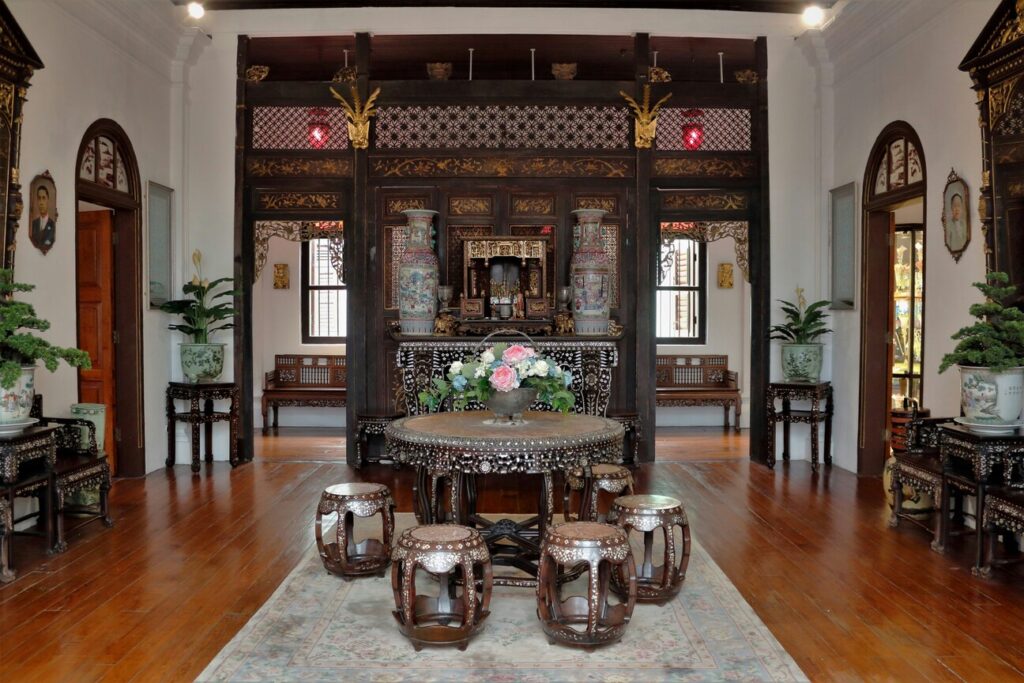
The Peranakan people, also known as Straits Chinese, emerged from centuries of cultural fusion between Chinese immigrants and local Malay communities across Malacca, Penang, and Singapore. This unique heritage began when Chinese traders arrived in the 15th century, intermarrying with Malay women and creating a distinctive community that blended the best of both worlds. The term “Peranakan” itself means “locally born” in Malay, reflecting their deep roots in Southeast Asia.
Peranakan culture extends far beyond food, encompassing a rich tapestry of traditions including the melodious Baba Malay language, elaborate kebaya dress worn by Nyonya women, and beautifully preserved shophouses that still grace Singapore’s heritage districts today. This cultural blend created a sophisticated lifestyle that valued both Chinese ancestral respect and Malay hospitality, forming the foundation for their extraordinary culinary tradition.
Trade, Migration & the Making of a Hybrid Kitchen
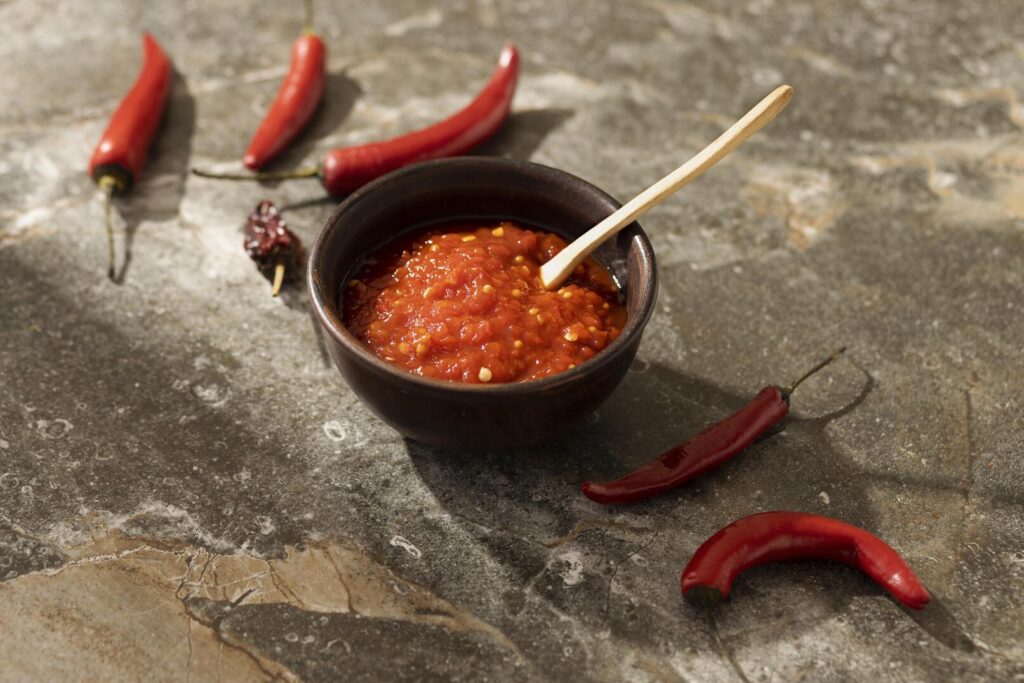
The strategic location of Singapore along ancient spice routes made it a natural melting pot for culinary traditions from across Asia. Peranakan kitchens became laboratories of flavour, where Chinese cooking techniques met the aromatic spice palette of Malaysia and the Malay archipelago. This intersection created a cuisine that borrowed liberally yet respectfully from both traditions.
The Peranakan pantry reflects this heritage through its sophisticated use of spices, sauce bases, and chilli preparations that would be equally at home in a Malay kitchen. Rice remains central to every meal, whilst preserved condiments like taucheo (fermented soybean paste) showcase Chinese influences. This hybrid approach created dishes that were familiar yet distinct, comfort food that told the story of cultural adaptation.The Peranakan Pantry: Core Ingredients & Flavour Builders
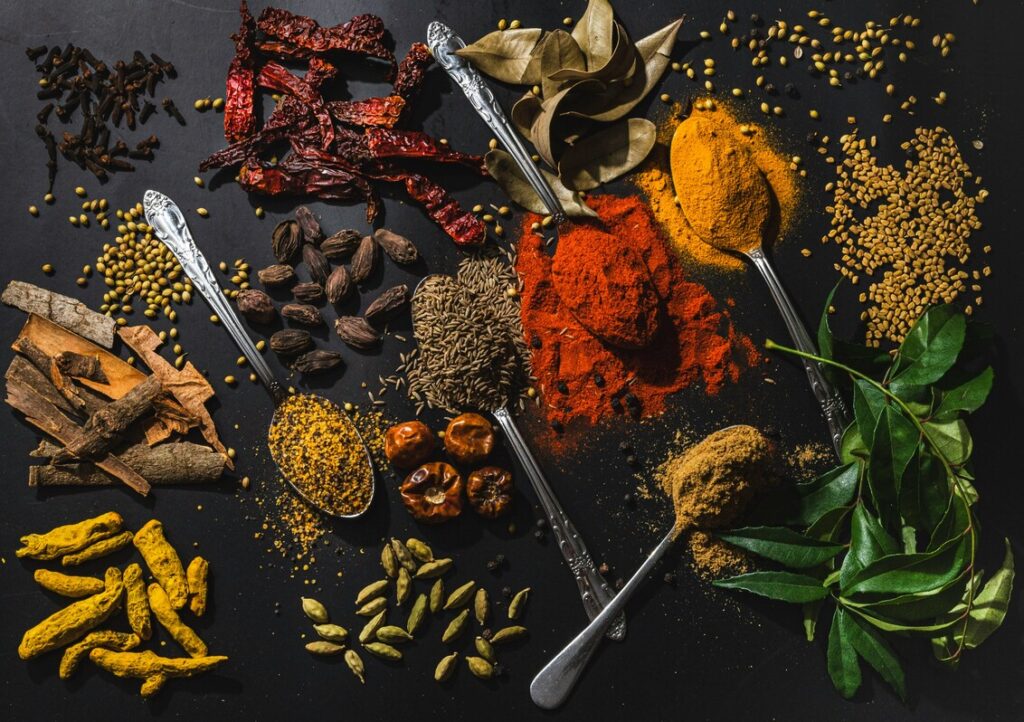
The heart of any Peranakan kitchen lies in its rempah—the aromatic spice paste that forms the foundation of countless dishes. This complex blend typically includes shallots, garlic, candlenuts, dried chillies, and fragrant roots like galangal and turmeric. Coconut milk adds richness and balances heat, whilst tamarind provides the tangy notes that brighten heavy dishes.
Traditional Peranakan cooks insist that rempah must be pounded by hand using a granite mortar and pestle, never blended in modern machines. This labour-intensive process releases essential oils differently, creating deeper, more complex flavours that simply cannot be replicated mechanically. Other essential ingredients include lemongrass for fragrance, gula melaka (palm sugar) for caramelised sweetness, and an array of fresh herbs that change with the seasons.Authentic Peranakan Craft — Rempah, Balance & Tradition
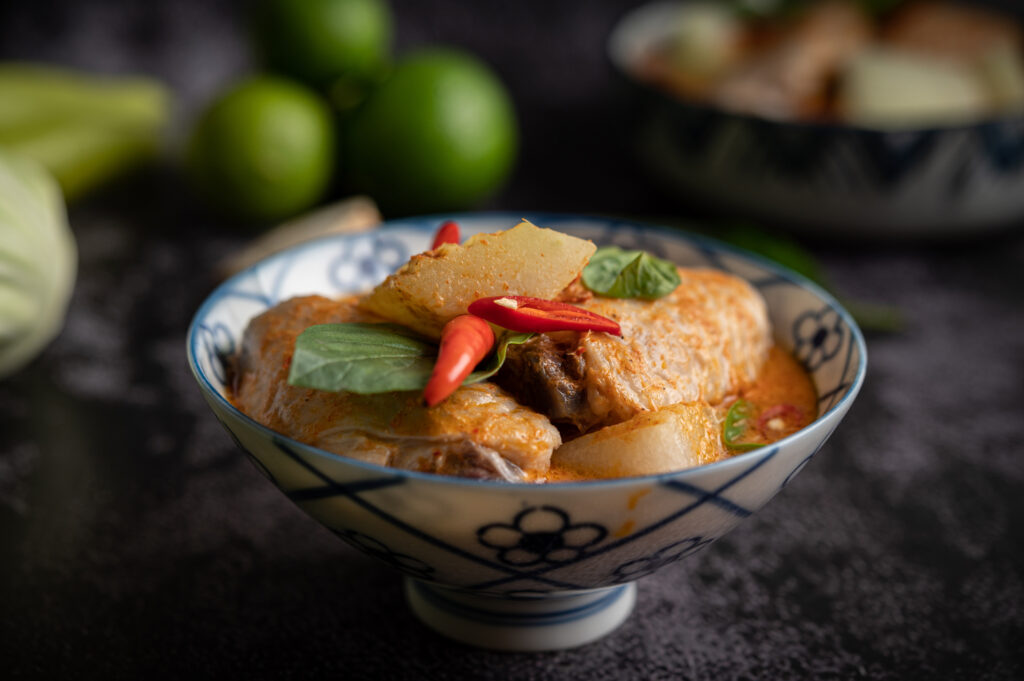
The mastery of authentic Peranakan cooking lies in understanding “pecah minyak”—the moment when pounded rempah releases its oils during slow cooking, filling the kitchen with intoxicating aromas. This technique, passed down through grandma recipes, requires patience and intuition rather than precise measurements. Each family’s rempah recipe varies slightly, creating subtle differences that make every meal unique.
True Peranakan cuisine achieves perfect balance between sweet, savoury, tangy, and spicy elements within each dish. This harmony reflects the community’s cultural approach to life—never too extreme, always seeking equilibrium. Preserving these heritage techniques has become increasingly important as older generations worry about losing traditional knowledge to modern convenience.Traditional Techniques & Contemporary Concepts
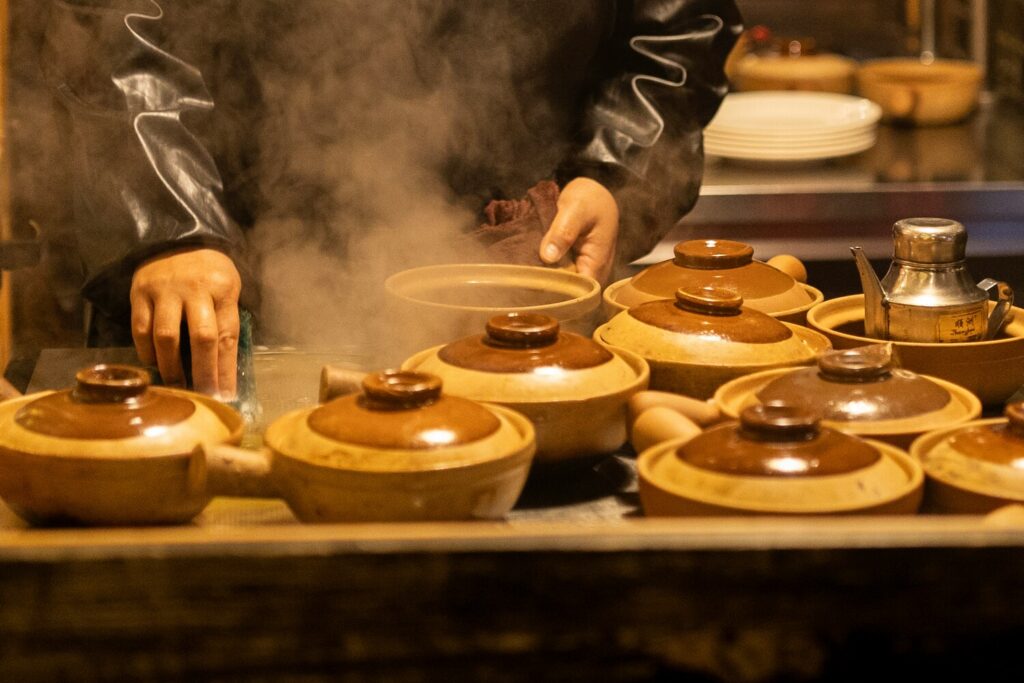
Classic Peranakan cooking employs time-honoured techniques that develop deep, complex flavours. Braising transforms tough cuts into tender morsels in dishes like babi pongteh and ayam buah keluak, whilst steaming preserves delicate textures in fish preparations. Banana-leaf grilling imparts smoky notes to otak-otak, and claypot cooking concentrates flavours whilst creating appealing contrasts in texture.
Modern interpretations respectfully adapt these techniques for contemporary dining, often lightening traditional dishes whilst maintaining their essential character. Contemporary plating presentations showcase the natural beauty of Peranakan ingredients, and some chefs experiment with modern cooking equipment to achieve traditional results more efficiently, though always with deep respect for the original methods.Peranakan Food — Crowd Favourites & Family Dishes
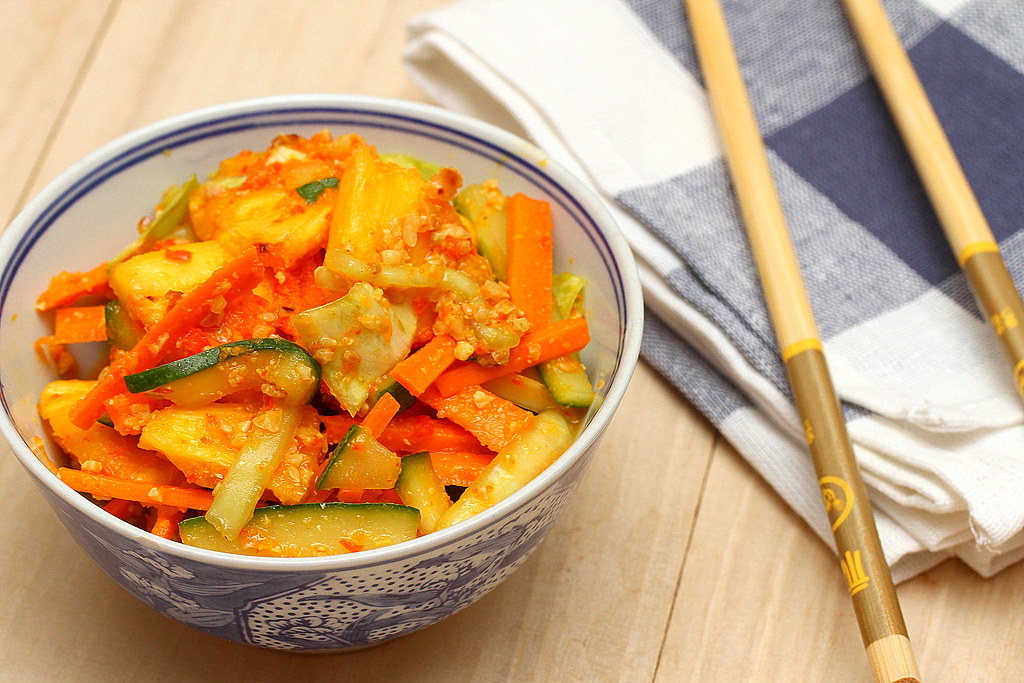
Traditional Peranakan meals follow specific patterns that reflect both Chinese and Malay influences. A typical family meal centres around steamed rice accompanied by several dishes that provide contrasting flavours and textures. Pickled vegetables (achar) cleanse the palate, whilst rich curries and braised dishes provide substance and warmth.
Lunch tends to be lighter, often featuring a single substantial dish with rice, whilst dinner becomes a social affair with multiple dishes shared among family members. Weekend gatherings transform meals into celebrations, with special occasion dishes that require hours of preparation. These crowd favourites often include labour-intensive creations that demonstrate love through effort—a core value in Peranakan food culture.
Iconic Dishes: Ayam Buah Keluak, Babi Pongteh, Beef Rendang, Assam Prawns
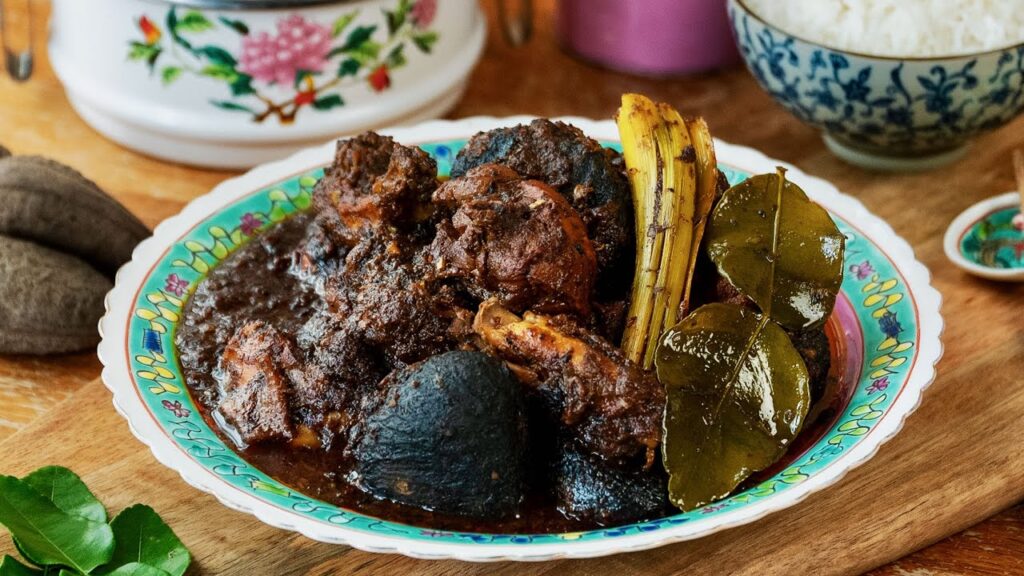
Ayam buah keluak stands as perhaps the most distinctive Peranakan creation, featuring chicken braised with mysterious black nuts that must be painstakingly cleaned and prepared. The buah keluak nuts provide an earthy, almost truffle-like depth that transforms simple chicken into something extraordinary. Babi pongteh showcases the Chinese influence through its use of taucheo (fermented soybean paste) to create a rich, umami-laden sauce that perfectly complements tender braised pork belly.
Beef rendang demonstrates how Peranakan tables adopted and adapted dishes from neighbouring cuisines, taking this Malay and Indonesian classic and making it their own through subtle modifications in spice balance and cooking technique. Assam prawns highlight the cuisine’s mastery of sweet and sour flavours, with fresh prawns glazed in a complex tamarind-based sauce that balances tangy, spicy, and sweet elements in perfect harmony.Sweet Traditions — Nyonya Food & Desserts

Nyonya food extends into an elaborate world of kueh (traditional cakes and sweets) that showcase the community’s artistic sensibilities and technical skill. These delicate confections often feature pandan for its distinctive flavour and natural green colouring, whilst gula melaka provides deep, caramelised sweetness that complements coconut and rice flour bases.
Modern desserts like durian pengat pancakes represent playful contemporary interpretations that honour traditional flavours whilst embracing new formats. These sweet creations have become crowd favourites at modern Peranakan establishments, offering familiar tastes in approachable forms that appeal to younger generations whilst satisfying traditionalists seeking authentic flavours.Peranakan Restaurant Guide — Heritage to Haute
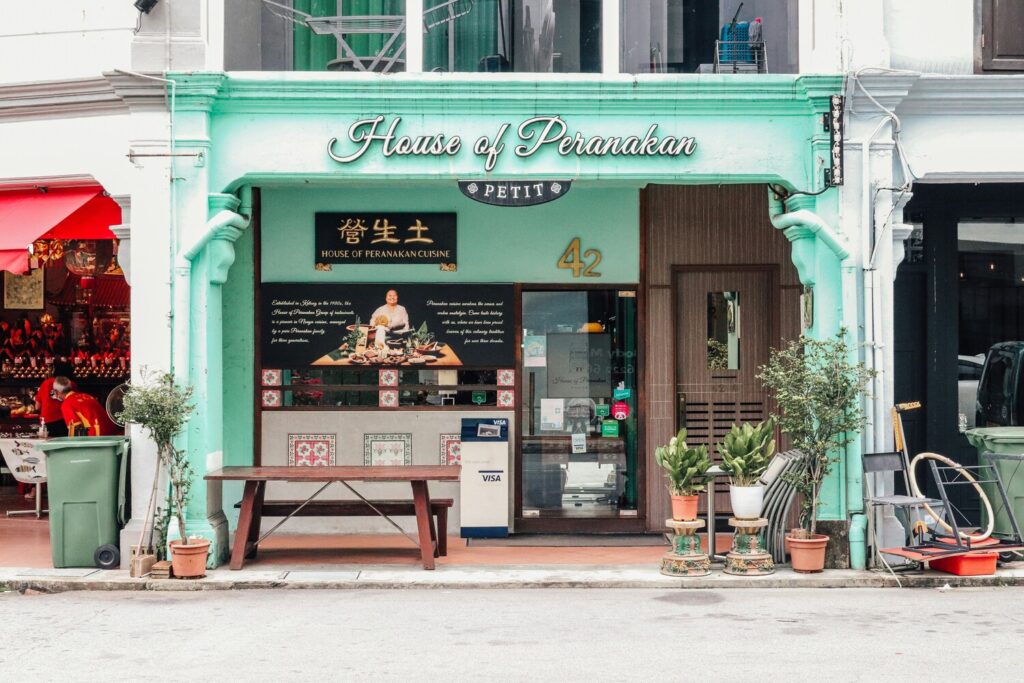
Singapore’s Peranakan dining scene spans an impressive spectrum from humble hawker stalls to award-winning fine dining establishments. Heritage eateries focus on preserving traditional recipes exactly as they’ve been passed down through generations, whilst refined restaurants reinterpret classic dishes for contemporary palates. Each chef owner brings their own vision and family heritage to their menus, creating subtle variations that reflect personal history and culinary philosophy.
This diversity ensures that diners can experience Peranakan cuisine at every level, from quick casual meals that satisfy daily cravings to elaborate celebration dinners that showcase the cuisine’s sophistication and cultural depth.Authentic Peranakan Food in Singapore — Where to Dine
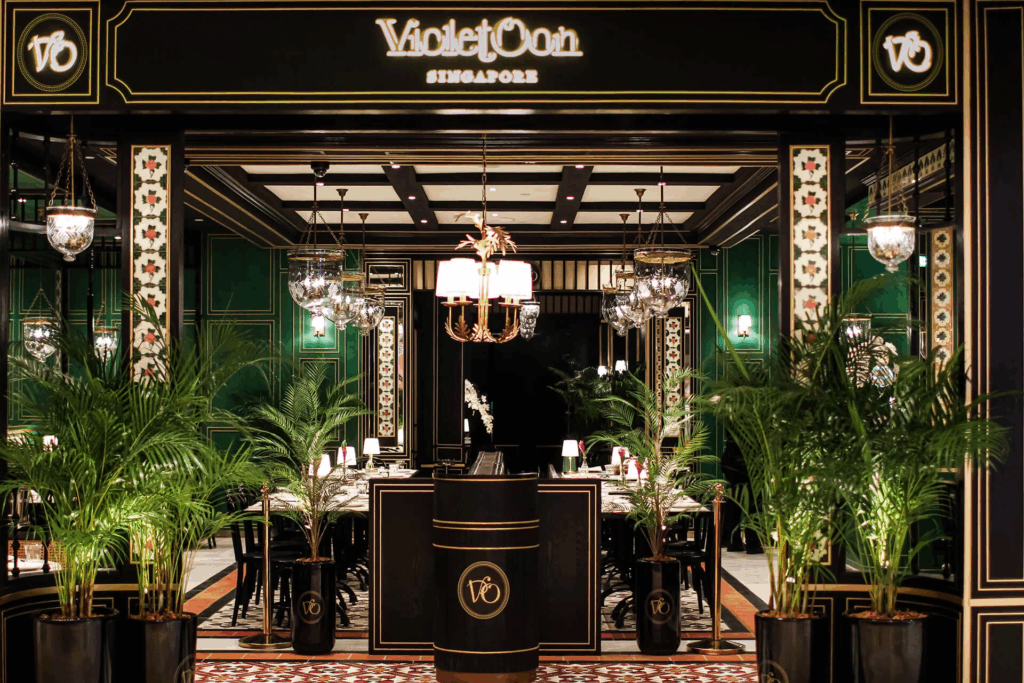
Violet Oon Singapore at National Kitchen has become synonymous with elegant Peranakan classics, offering refined versions of traditional dishes alongside innovative creations like dry laksa and artistic kueh presentations. The Blue Ginger provides a convivial atmosphere for experiencing heritage plates that stay true to traditional recipes whilst maintaining consistently high quality.
Candlenut stands out as Singapore’s michelin starred peranakan restaurant, where Chef Malcolm Lee creates sophisticated tasting menus that honour tradition whilst pushing creative boundaries. For those seeking affordable peranakan food, IVINS Peranakan Restaurant delivers excellent value with generous portions and authentic flavours. Peranakan Inn maintains old-school charm with homestyle cooking, whilst Simply Peranakan Cuisine offers casual favourites in family-friendly settings perfect for introducing children to this rich culinary heritage.
Neighbourhoods & Trails — Katong, Joo Chiat & Parkway Parade
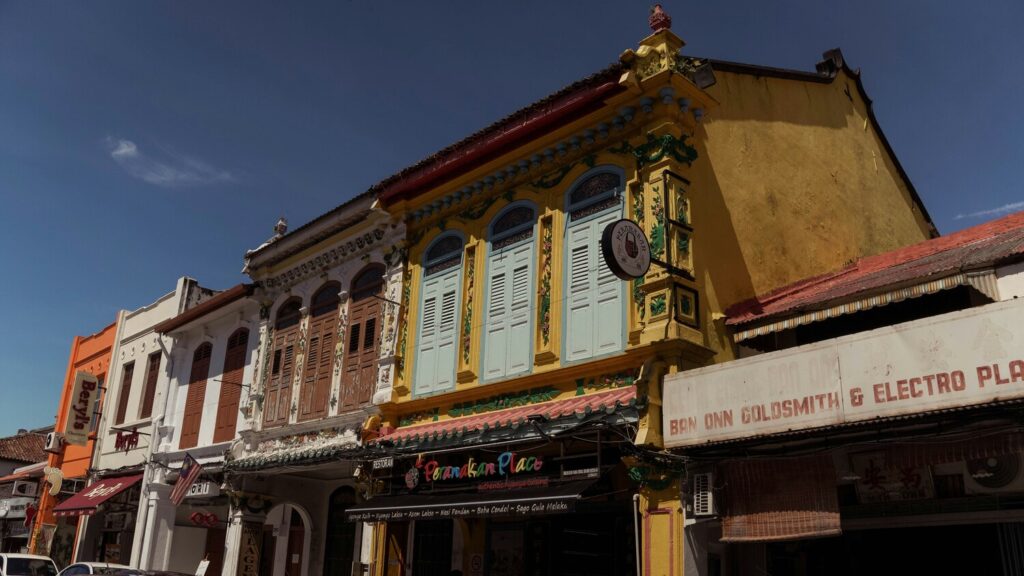
The Katong and Joo Chiat heritage belt offers the most immersive Peranakan dining experience, with numerous restaurants clustered within walking distance of beautifully preserved shophouses. This area’s proximity to Parkway Parade adds modern shopping convenience to traditional cultural exploration, making it perfect for day-long culinary adventures.
Weekend strolls through these neighbourhoods reveal hidden gems alongside established favourites, though it’s wise to avoid the busiest periods on Friday, Saturday, and Sunday when queues can be lengthy. Tuesday and Thursday visits typically offer quieter dining experiences with shorter wait times and more relaxed service.Planning Your Meal — Lunch, Dinner, Reservation & Dine-Ins
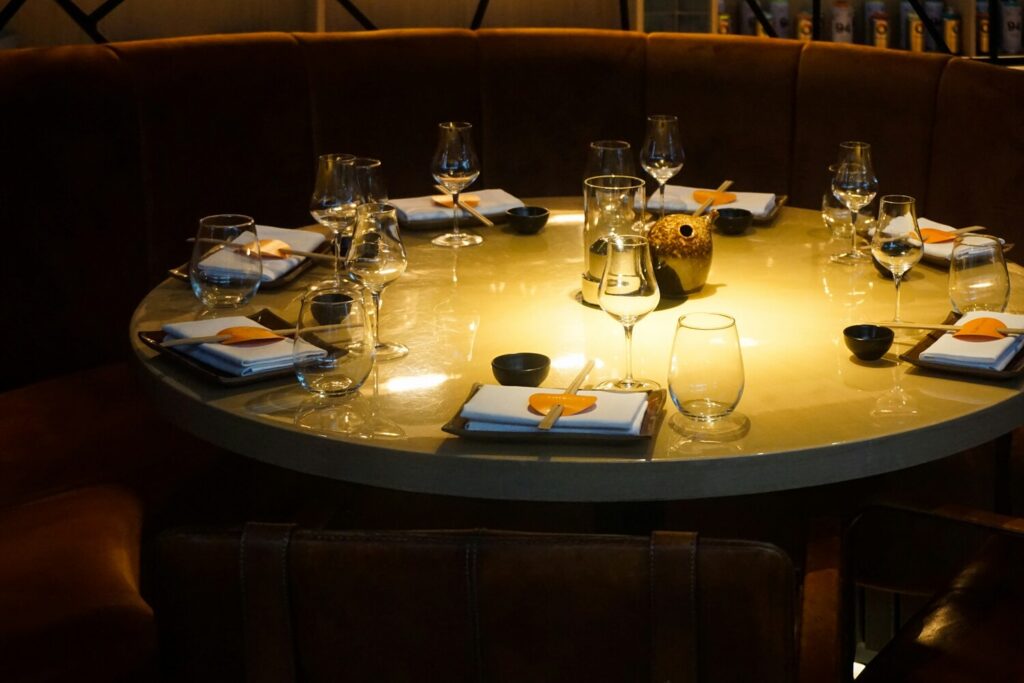
Strategic meal planning enhances any Peranakan dining experience. Successful reservations typically require booking 1-2 weeks in advance for popular restaurants, particularly for weekend dinner slots. When building a balanced meal, combine one bold, spice-forward dish with something comforting and mild, add a vegetable preparation for contrast, and finish with a traditional dessert.
For group dining, consider how to split the total bill fairly whilst ensuring everyone can sample multiple dishes. Most establishments accommodate table sharing customs that are integral to Peranakan food culture, and servers can provide guidance on appropriate portion sizes for your party size.Peranakan Heritage — Preserving Tradition Through People & Places
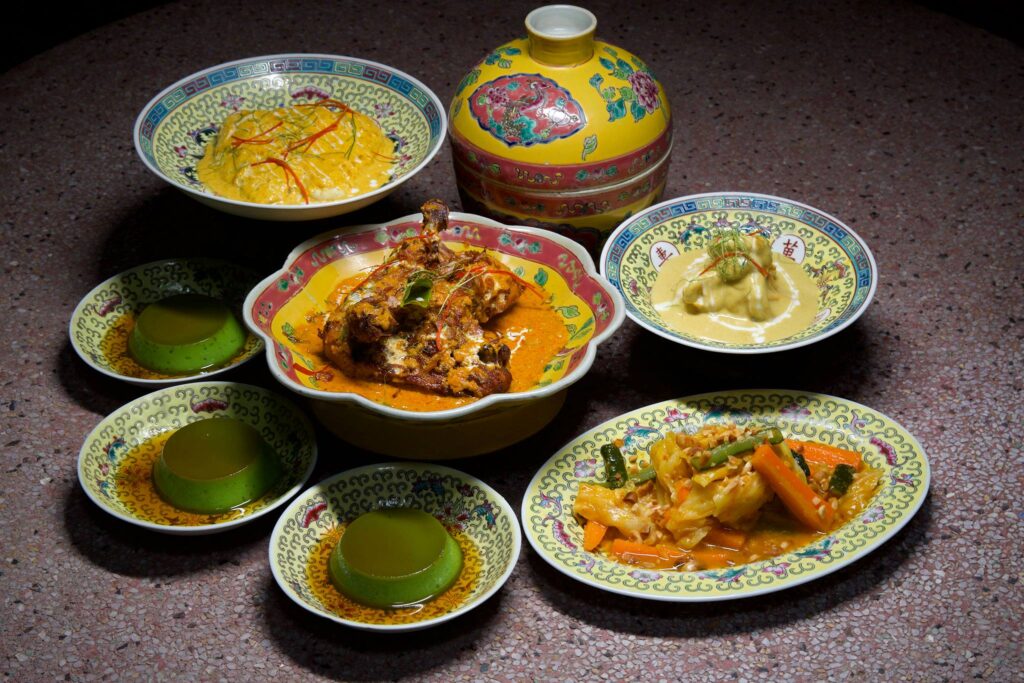
Behind every authentic Peranakan restaurant lies a story of heritage preservation, often beginning with family notebooks filled with handwritten recipes passed down through generations. Many chef owners have dedicated their careers to documenting and sharing these culinary treasures, conducting workshops and maintaining cooking techniques that might otherwise disappear.
These restaurants serve as cultural guardians, preserving not just recipes but the stories, techniques, and values that make Peranakan cuisine meaningful to Singapore’s national identity. Their work ensures that future generations can experience these remarkable flavours whilst understanding the rich history they represent.Singapore’s Peranakan cuisine represents one of the world’s most successful examples of culinary fusion, proving that respectful cultural exchange creates something greater than the sum of its parts. Whether you’re seeking your first taste of this remarkable heritage or looking to deepen your appreciation for familiar flavours, the city’s diverse Peranakan dining scene offers endless opportunities for delicious discovery.What are your favourite Peranakan dishes or restaurants in Singapore? Share your discoveries and recommendations in the comments below—we’d love to hear about your own culinary journey through this fascinating cuisine.